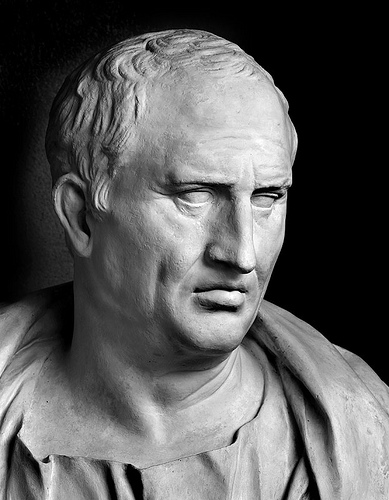
“I thank the eternal power that I meet my end, not from secret plots, nor from the pain of a tedious illness, nor by the fate of a criminal, but that in the mid-career of glorious renown I have been found worthy of so noble a departure from this world.”
That’s the Roman emperor Julian, giving a speech on his deathbed 1,651 years ago.
Not the most subdued way to go.
In Classical Rome, speaking skills were just as important part of public life as they were in Ancient Greece. But unlike with the rational-minded Greeks, it was stylistic language and dramatic performance that caught the ears, hearts, and minds of listeners.
Blame Cicero. He’s credited with transforming Latin from utilitarian bureaucratese into the most important literary language in the Western world. His speeches, books and letters influenced everyone from the Renaissance writers to the Founding Fathers of the United States.
From one of his speeches condemning Marc Antony:
“That, Senators, is what a favour from gangs amounts to. They refrain from murdering someone; then they boast that they have spared him!”
But it was not just Cicero’s use of language that influenced the art of public speaking.
Cicero outlined the first systematic process for consistently producing and presenting effective speeches: The Five Canons of Rhetoric, later elaborated by Cicero-devotee Quintilian in Institutes of Oratory. The canons—or steps—are:
This was the first step-by-step process to speak effectively—how to make audiences want to listen, every time.
Two thousand years later, I’d like to think I’m helping my roster sway hearts and minds, just like Cicero.
Add comment